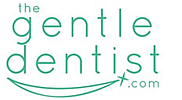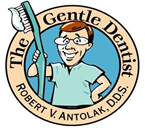Question: I was recently reading an article in a health magazine that discussed how germs can remain on the toothbrush. Could you please explain to me what the proper method for brushing teeth is and the best way to keep my brush disinfected. Thank You
Answer: The most common question I get asked is in that one you presented. You may have been using your toothbrush for several months, and it looks reasonably clean, doesn’t it? But do you know that your toothbrush may be contaminated with bacteria? Your toothbrush comes in contact with toothpaste, saliva, oral debris, and even blood on a daily basis. Although you may rinse your toothbrush after use, it can remain contaminated with potentially harmful germs.
To help prevent bacterial contamination of your toothbrush, follow these tips:
- Wash your hands before and after brushing.
- Don’t allow the toothpaste tube to touch your toothbrush.
- After brushing, rinse your toothbrush thoroughly and allow it to air-dry in an upright position.
- Don’t let it come into contact with other toothbrushes.
- Don’t cover your toothbrush; this interferes with drying.
- Replace your toothbrush every 3 to 4 months, or sooner if the bristles are worn or you’ve been ill.
- Clean the toothbrush holder regularly to kill potentially harmful bacteria.
- Never share your toothbrush with someone else.
Brushing properly
Another important way to prevent illness is to brush properly. Along with flossing, this will help prevent periodontal disease and keep your teeth and gums healthy.
Proper tooth brushing involves four things:
- A soft toothbrush
- Toothpaste with fluoride
- The correct angle of brushing
- Brushing in a pattern
Whether you use a manual toothbrush or an electric toothbrush, it’s important to brush at least twice a day, after breakfast and before bed. We recommend the use of a soft toothbrush. A soft brush is kinder to your teeth and gums, and also makes it much easier to remove the plaque below the gumline, where periodontal disease starts.
Use a pea-sized amount of toothpaste that contains fluoride. Fluoride hardens the outer enamel layer of the teeth. It might stop a cavity in its tracks and give you more resistance to future cavities.
Angle the bristles of the brush along the gum line at a 45-degree angle and apply firm pressure so the bristles slide under the gumline. Vibrate the brush while you move it in short back-and-forth strokes and in small circular motions. Brush two or three teeth at a time. Then move to the next teeth, allowing some overlap. Tilt the brush and use the tip to brush the backs of the front teeth.
It’s fine to brush in any regular pattern you choose, but since the insides of the teeth tend to get less attention, you might start with the insides of the upper teeth, then go to the insides of the lower teeth. Switch to the outsides of the upper teeth, and then the outsides of the lower teeth. Brush the chewing surfaces of the upper teeth, then the lower teeth, and end by gently brushing your tongue and the roof of your mouth. This removes germs and keeps your breath fresh.

